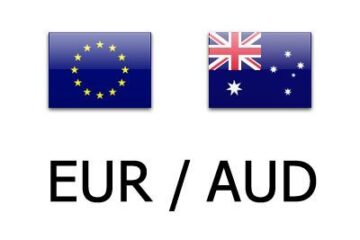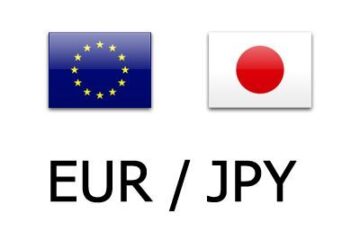Gasoline prices are at their lowest levels since March and are likely to keep falling, analysts say.
Gasoline prices are expected to continue their downward trend during Labor Day weekend as consumers are still receiving a reprieve.
Crude oil prices declined on Sept. 2 to $86.97 a barrel on ongoing fears of an impending recession curbing demand. Inflation rates remain high and consumers face tighter budgets from paying more in food, housing and energy costs. The possibility of more rate hikes from the Federal Reserve and more lockdowns in China due to covid-19 have also played a factor.
Consumers are facing the “cheapest summer holiday this year,” Patrick De Haan, head of petroleum analysis, GasBuddy, a Boston-based provider of retail fuel pricing information and data, told TheStreet.
The decline of gas prices can be attributed to a number of factors, including an uptick in domestic oil production and an expansion of U.S. refining capacity, Bernard (Bud) Weinstein, a retired energy economist at Southern Methodist University, told TheStreet.
“At about $3.80 per gallon, the national average price for gasoline over Labor Day weekend will be considerably lower than it was over the July 4 holiday when the average was just under $5 per gallon,” he said.
A sluggish economy in China, the world’s second largest consumer of fossil fuels, and the onset of a recession in most of Europe has “depressed the demand for oil and petroleum products and pushed down the price of crude oil by $30 per barrel since June,” Weinstein said.
Gasoline Prices Decline For 11 Weeks
The drop in gasoline prices has been significant with 11 consecutive weeks of declines and is estimated to continue declining.
“Prices have been falling and that trend will stick around through the weekend,” De Haan said.
The current decline in gasoline prices marks the longest period since 2018, De Haan said. During the height of the global pandemic in 2020, gasoline prices fell for 10 weeks in a row.
Between the Fourth of July through Sept. 2, gasoline prices have dipped by 20%, De Haan said.
“Americans will come back Monday and see prices a little bit lower than when they left their houses,” he said.
The national average is now $3.802 per gallon and will continue to decline to even $3.29 by later this fall, barring unexpected disruptions to refineries from any hurricanes, De Haan said. Gas prices are now at their lowest level since March, falling every week of the summer.
As of Sept. 1, there were at least 15 states selling gasoline for $2.99 or lower.
Prices falling to $2.99 a gallon on average is a possibility, he said.
“We could see the first CITY average falling under $3/gal this weekend — not just one or two stations… Lawton, OK the average price is currently $3.05/gal,” De Haan tweeted.
Gas Prices Face a Big Unknown
Unless a major hurricane shuts down refineries along the Gulf Coast, the decline in gasoline prices at the pump is expected to continue, De Haan said.
Crude oil prices have fallen on concerns about the global economy slowing down, another shutdown in China has impacted demand and factory activity and rising interest rates by both the Federal Reserve and ECB.
OPEC and and its allies, known as OPEC+ have discussed the possibility of lowering the production of oil and has a scheduled meeting on Sept. 5.
When OPEC+ met on Aug. 3, the group agreed on increasing production by 100,000 barrels for September.
If OPEC decides not to slash production, gasoline prices will remain under $3.50 a gallon, De Haan said. If they do cut production, gasoline prices will fall only another $0.10 to $0.15, he said.
In September, gasoline prices typically fall as the summer holiday driving season comes to an end and refiners shift to “winter” gasoline, which is cheaper to produce.
The average retail gasoline prices should drop another $0.20 to $0.25 per gallon this month, Weinstein said.
“Even with hostilities continuing in the Ukraine-Russia conflict, which has disrupted global oil markets, this should still be the case as plenty of supply is available elsewhere in the world,” he said.
Peak Hurricane Season Started
Colorado State University researchers predict an active hurricane season and estimate 18 named storms, eight hurricanes, and four major hurricanes that are Category 3 or higher this year.
The National Hurricane Center said on Sept. 2 that Danielle became the first Atlantic hurricane of the season.
Danielle is estimated to be a category 2 hurricane and will “meander over the open Atlantic during the next couple of days,” before moving to the northeast early next week, the hurricane center said. The projected route poses no threat to oil production in the Gulf of Mexico.
Crude oil prices could spike by $10 only if a major hurricane made landfall along the Gulf Coast and increasing gasoline prices by $0.25 a gallon, Rob Thummel, senior portfolio manager at Tortoise in Overland Park, Kan., told TheStreet.
An outage at refineries could throw gasoline prices back into the mid $4s, he said.
A hurricane in the Gulf of Mexico that forces the shutdown of rigs and production platforms could “cause a short-term blip in prices,” Weinstein said.
“If we see a Hurricane Harvey or Ida, the impact could be significant,” De Haan said. “Any major hurricane entering the Gulf of Mexico would be bad news for gas prices, but it’s pretty rare to see an Ida going into the backyard of refineries. By and large if we see a hurricane prices could go back up.”


